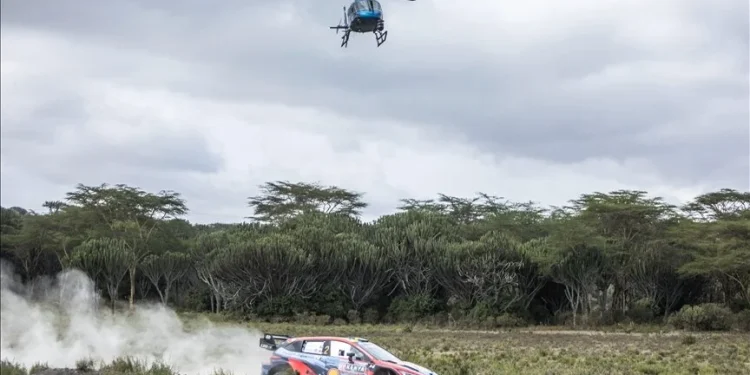Drivers from across globe the battle for glory with iconic Kenyan landscapes in backdrop
NAIROBI, Kenya
The highly anticipated World Rally Championship (WRC) Safari Rally 2024 kicked off Thursday in Kenya with a ceremonial flag-off led by President William Ruto at the Kenyatta International Convention Centre (KICC).
“We will combine efforts with the World Rally Championship to keep the Safari Rally as a world-class sport. This will boost our tourism and overall economic growth,” Ruto told drivers.
He added that the race will provide a major boost to the economy by “increasing incomes for local businesses, and direct and indirect jobs, and attracting local and foreign tourism investment, catering, accommodation facilities and services.”
Throngs of spectators gathered at the KICC and along highways in Nairobi to witness the launch of the grueling four-day competition.
After the ceremony, the rally convoy, featuring high-performance vehicles, embarked on a journey to Kasarani Stadium in the capital for a thrilling exhibition stage.
The heart of the rally action lies in Naivasha, located in the Rift Valley region that is approximately 90 kilometers (56 miles) northwest of Nairobi.
Drivers and their teams from around the globe will engage in a fierce championship pursuit amid breathtaking landscapes in Kenya.
Renowned for its iconic Safari Rally, Kenya offers a route notorious for its unparalleled toughness, characterized by nearly impassable, rugged terrain that features open, soft, bumpy, rocky and gravel roads. This year, the challenge is intensified by the onset of the rainy season.
According to the International Automobile Federation (FIA) world rally championship driver standings, a mere three points separate the top two contenders — Thierry Neuville of Hyundai and Elfyn Evans of Toyota.
The fight for manufacturer supremacy is equally close, with Hyundai and Toyota currently sharing the lead.
The grueling four-day competition culminates on Sunday with a decisive leg, according to the FIA.
Drivers will tackle the Malewa stage first, shortened this year from 9 kilometers to 8.33 kilometers.
They will then navigate the Oserengoni stage, named after the wildlife conservancy where it is located, before taking on the challenging 10.53-kilometer Hell’s Gate test.







